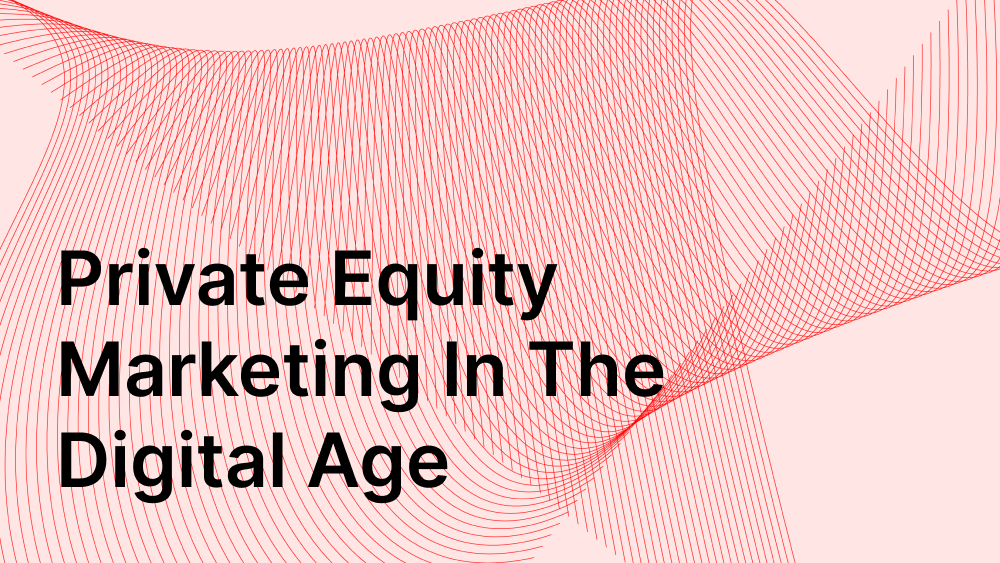Historically, private equity funds have centred their marketing efforts on traditional public relations, printed marketing materials and the corporate website. The digital landscape is constantly developing and has created new opportunities for private equity funds to communicate with their stakeholders. The creation of high quality and engaging content now enables GPs to reach their target audiences through a wide spectrum of different channels.
Google is the gateway to finding you on the internet, currently they have a search engine market share of 89% in the UK, 70% in the USA and 75% in Europe. The Google search page is likely to be the first impression someone has if they want to learn about your business. By feeding content into each of the online platforms, the corporate website and through search engine optimisation (SEO), your google search page is populated with controlled subject matter. In time your google search page becomes your online corporate brochure, with links to your branded social media pages, videos showcasing your company story, investments and responsible investment practices.
Many GPs are using videos to engage their audiences, they are powerful at showcasing a GPs value add and differentiators that will support fundraising, deal-sourcing and attracting employees. Axxon Research found that 7 in 10 people view brands in a more positive light after watching interesting video content from them, and 81 percent of senior marketing executives now use online video content in their marketing programs, up from 70 percent in 2011. To fully realise a piece of content’s potential (both written and video), you must make it easy for users to find it. If you have a piece of written or video content on your website, it should also be posted to your LinkedIn, Google+, Twitter, Facebook, Vimeo and YouTube pages. This way you can provide a feed of consistent and controlled messages to all of your stakeholders.
Private equity is a business based on relationships. For many, social networks have become a preferred way to connect with friends and business associates, a trend that will only increase in the future. For private equity funds social media can help with deal origination and the maintenance and generation of LP relationships. Research published in 2010 found a number of GPs are benefiting from openly discussing their investment theses, thus increasing their perceived expertise and trustworthiness. The research indicated that funds who are present on social media have an increased visibility to investors and potential portfolio companies compared to those who are not. It is not surprising that social networks have been set up with the specific intention of linking GPs and LPs. Written and video content can also be posted to a GPs news page, again providing further consistency with the wider marketing strategy.
“Your google search page becomes your online corporate brochure, with links to your branded social media pages, videos showcasing your company story, investments and responsible investment practices.”
One mid-market private equity fund incorporated Facebook, LinkedIn, Twitter, an RSS feed, and a blog on its website. It also sent out a monthly e-marketing mailer to its distribution list of stakeholders and potential partners. Since they started using social media overall traffic to their website increased 13% per month, referral traffic (traffic from other websites) increased 119% over the three preceding months, visitors spent an average 3.17mins instead of the previous 1.32 mins on the site and 16% of visitors reached the site from the blog or social networking sites. This analysis clearly shows that social media is not just a tool to be used by consumer facing brands, tailored correctly, private equity funds have much to gain from it.
Another benefit for private equity funds who decide to use social media platforms as a part of their marketing strategy, is that all of the platforms provide statistics and information about visitors to their page. This is also the case when sending out e-marketing mailers; it is possible to track your campaign performance by seeing who opened your email, how long they had it open for, what links they clicked on within the email and when they came back for more. Social media, e-marketing campaigns and the corporate websites provide some powerful analytics and data that can be used to inform future marketing strategies.
The private equity industry has a great story to tell, one of job creation, supporting businesses to grow, driving innovation and making companies stronger for the future. Funds can best tell their story through written and video case studies of their investments, an exit story should be about more than just the returns made, it should highlight what value the GP added to achieve success. By doing this it will showcase why an LP should invest in their fund, a company manager choose to partner with them and a candidate aspire to join them.
Traditional private equity marketing methods will continue to play their part in how a GP reaches its target audience. If the content reaches the website, social media and an e-marketing mailer, it should also be used in advertisements, printed marketing materials (annual review, sector leaflet, company brochure etc.), events and with the press. Using content across all of the possible delivery methods available makes a marketing budget work much harder for its money whilst reinforcing a consistent and controlled message to stakeholders. GPs who decide to evolve their marketing strategies to match the behaviour of their stakeholders have everything to gain, those who dip their toes in the water risk being left in the past.


